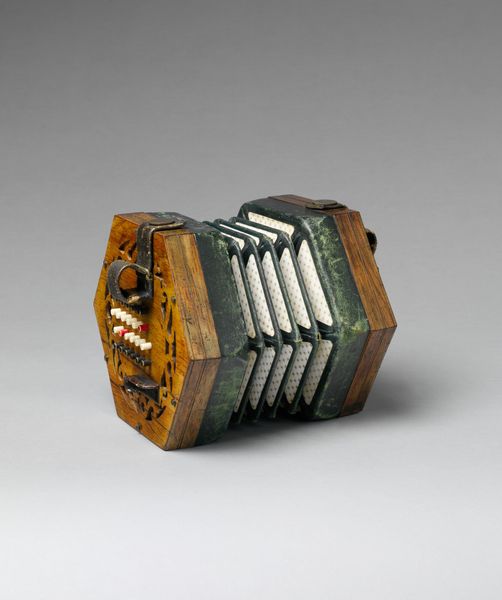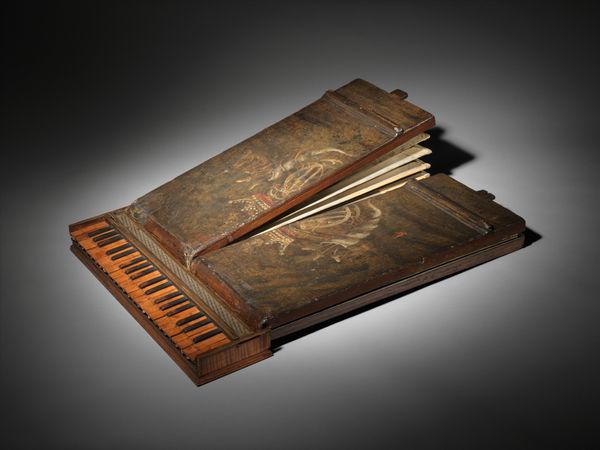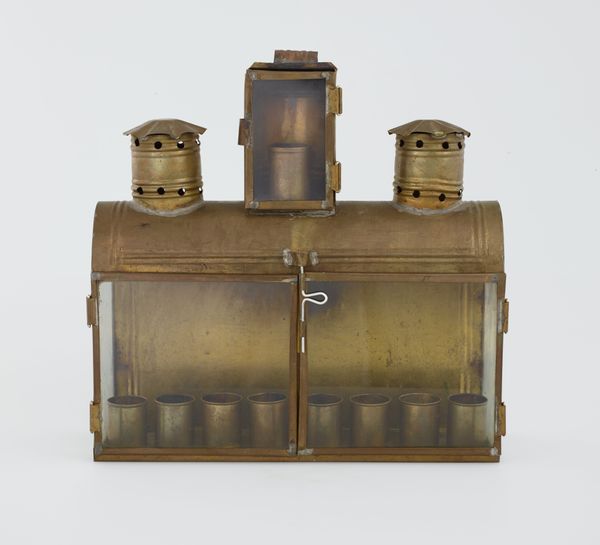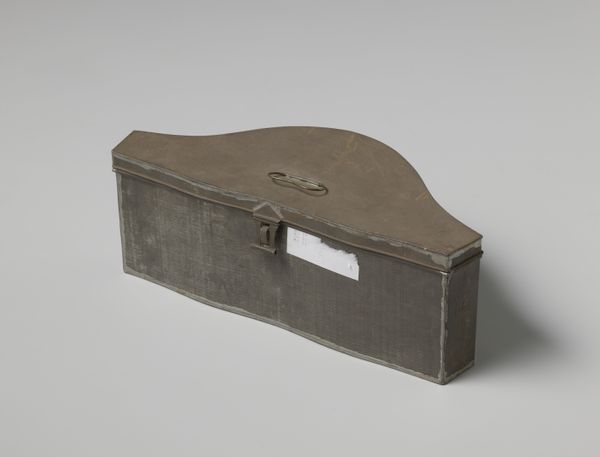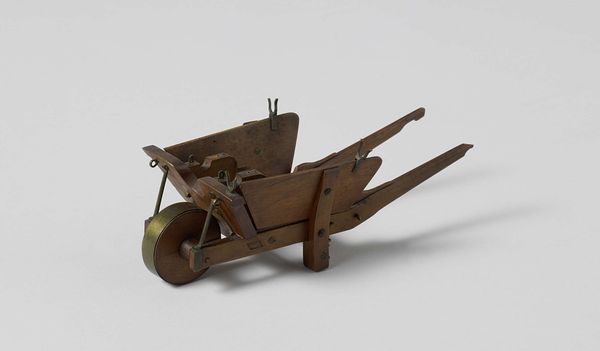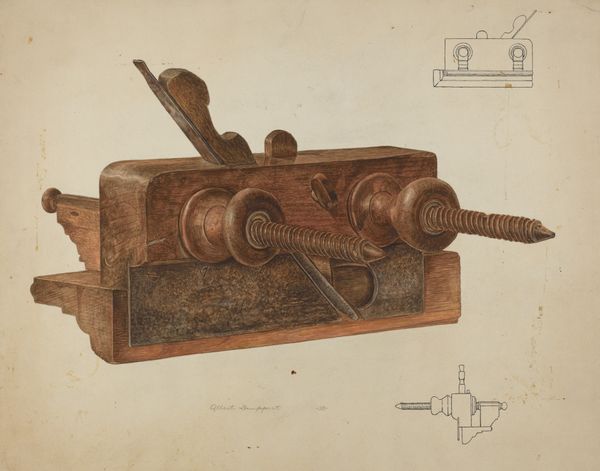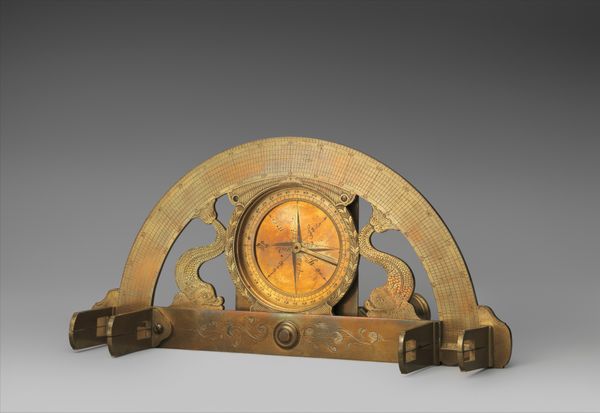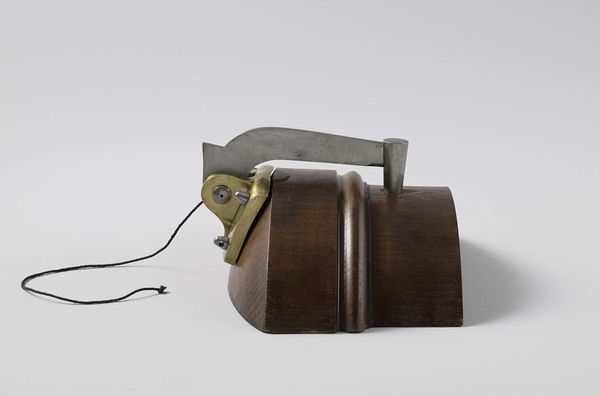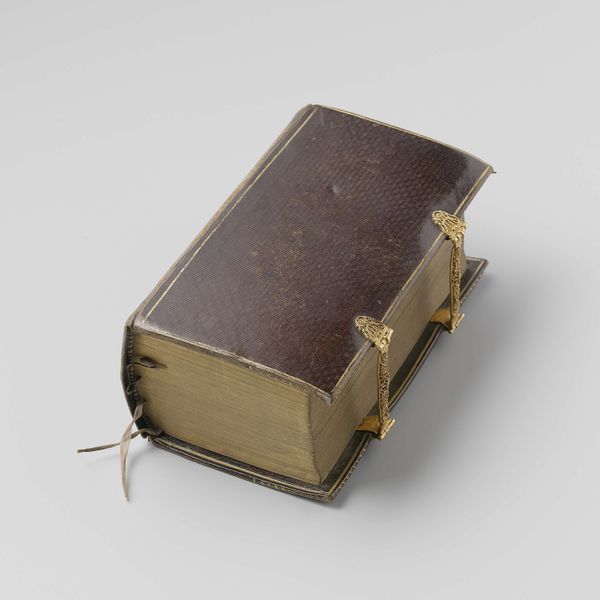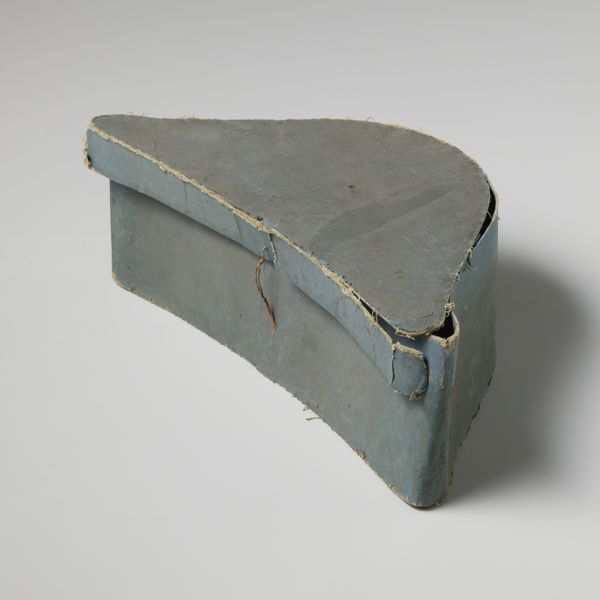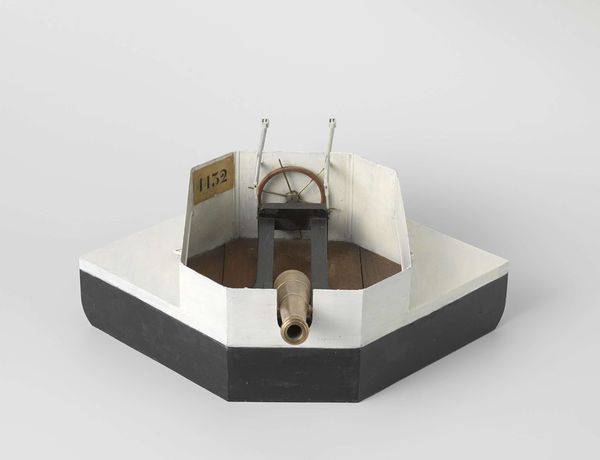
metal
#
metal
#
musical-instrument
Dimensions: 2 3/4 × 2 3/8 × 1 7/16 in. (7 × 6.1 × 3.7 cm)
Copyright: Public Domain
Curator: Before us is a curious creation called the "Symphonium," dating roughly between 1825 and 1845 and crafted by Charles Wheatstone. It's a metal musical instrument currently residing here at the Metropolitan Museum of Art. Editor: My first impression is that of a machine. It feels cool, contained, almost…sterile. The materials give it a severe, precise geometry that suggests calculated function over artistry. Curator: It’s a fascinating object, really. Consider the craftsmanship; each element, from the delicate legs to the precisely placed keys, seems designed for both visual appeal and functionality. There's a calculated elegance in the design language, which speaks to a specific ideology about craftsmanship. Editor: Elegance, perhaps, but to what end? The period marked a real turning point in the accessibility of musical expression; mass production had changed how instruments were experienced socially. Was the goal of the "Symphonium" mass-market reach, or did it have aspirations to connect with new audiences outside formal musical circles? Curator: I find the materiality particularly striking. The cold, hard metal, combined with the ivory-colored accents, create a textural contrast that draws the eye. It speaks to an intentional exploration of surface and form that aligns with Wheatstone's interest in acoustics and sound transmission. Editor: It is interesting how these objects reflect and perpetuate hierarchical access. In the broader history of decorative art during the 19th century, objects like this were tools for reinforcing power structures. Is there a certain degree of elitism implied in possessing such a precise, almost scientific-looking musical instrument? Curator: Possibly. The inscription marks it "His Majesty's Letters Patent." It suggests exclusive manufacturing, distribution, and control, certainly beyond just mere artistic expression. Perhaps the aesthetic coldness you sensed earlier resonates because, by its nature, it would have been detached from widespread public engagement. Editor: The 'Symphonium' is a great example of how socio-political power structures find form and expression. Thinking about it helps me reflect upon what is absent—an accessible history, one not solely about patents, access, and privilege. Curator: I think I come away understanding how an aesthetic of precision serves the very idea of musical experience as much as it serves its functional execution. Editor: And it forces me to remember that objects can be tools of division just as much as tools for harmonic expression.
Comments
No comments
Be the first to comment and join the conversation on the ultimate creative platform.
